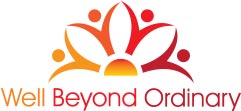
Ron Parker & Tambre Leighn Photo by Ilona Ilona Glinarsky ~ Ilona Living Tango
Last fall, when I ended up stranded far from home without power due to Hurricane Sandy my team was there for me. Ahead of the storm when we realized on the Sunday before it hit that I wasn’t getting out, they helped me create an exit strategy and an interim place to land at one of our executive’s homes. As a result, I was one of the lucky ones who got to ride out most of Sandy with electricity and heat surrounded by caring people. Though I wish it didn’t take natural disasters to underscore the importance of our connection to others, it certainly was something to be appreciated…the opportunity in eye of the storm.
Several days later, and with a secured seat on one of the first planes out of Newark, I landed in time to travel to a Tango Festival mini-vacation I’d had planned for months. And in the dance workshops, the echo of our connectedness resonated loudly.
You cannot dance Tango as it is intended alone. You cannot dance it well if you approach it as two people dancing one dance. It requires connection, letting go of the “I” to become, as they say, one entity with four legs moving and breathing together. If there is a great divide, the dancers will feel it and the watchers will see it.
In the larger context, if a couple takes to the floor as if no other dancers are present and they are the only ones, chaos ensues. Couples must work together to safely and smoothly navigate the space so that separately, each can enjoy the movement they are creating and together, the group generates a community of respect and sharing.
Life is the same. We have smaller units or communities we are part of AND these are part of a larger whole. This is our universe. We get to design the dance and how we choose to engage in the experience.
In the dance with cancer, people often feel like they are going solo. Survivors and caregivers can feel isolated and as if they are the only ones going through the challenge of their journey. While each person’s experience with cancer has its unique aspects, there is common ground. Organizations such as I Had Cancer, Imerman Angels and Stupid Cancer work diligently to create points of connections for survivors, extending hands across miles and through the internet to weave a net of support and understanding. But there is still much to be done with hundreds of thousands of new cancer diagnoses every year.
Someone who recognized the need for less isolation and more connection in the cancer community was activist, filmmaker and person extraordinaire, Laura Ziskin. As one of the founders of Stand Up 2 Cancer, she demanded researchers stop using a competitive model of who could be first to a cure and, instead, work in a collaborative one. Her years as one of the biggest players in Hollywood and as a filmmaker had taught her that movie magic doesn’t happen without the highest degree of communication and sharing between the experts.
Often left out of the conversation regarding the need for support and connection is the oncology healthcare practitioner. Nurse, physicians and other specialists who are often touched not only professionally, but also personally by the long tendrils of cancer are both the perfect connectors to direct survivors and caregivers to resources they need to overcome isolation and the perfect candidates to receive support and other resources. It is time for us to do a better job connecting the cancer community…patients, survivors, caregivers, and advocates to practitioners, researchers, and healthcare organizations.
Building this bridge is going to require new tools, a different approach and a redirection of energy. The current model is riddled with stress inducing situations, circumstances, and conversations. This is why I am so excited about the work I’m now involved with as the Managing Director of the 7th Level Wellbeing™ Division at the Institute for Professional Excellence in Coaching (iPEC). Building on iPEC’s success with their CCLEP program in Corporate America, we’ve developed a unique approach and programs to facilitate a (R)evolution™ in healthcare to transform stress and provide training to healthcare experts that helps them embed the tools of coaching into their models of care in service to the patient.
It can no longer be an “us against them” model…patient, caregiver and, sometimes even healthcare practitioner against the healthcare organization. As in Tango, we must create an embrace and work together to achieve our greatest goals. As in life, some will join us on the dance floor and others will watch from the audience. Cancer Treatment Centers of America® is taking the lead with us. To read more about their steps into the new frontier of cancer survivorship, check out Bridging the Gap: Cancer Treatment Centers of America® in Phoenix Takes the Lead in Innovative Survivorship Care.

